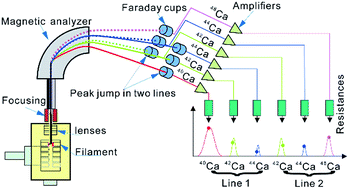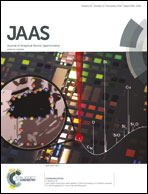Optimization of the double spike technique using peak jump collection by a Monte Carlo method: an example for the determination of Ca isotope ratios
Abstract
Three important factors, including the choice of an appropriate spike isotope pair, the composition of the double spike, and the ratio of the double spike to the sample, have been proven to have a significant effect on the precision of the double spike technique. Moreover, peak jump (i.e., dynamic) collection mode is frequently used, which could lead to more variable parameters such as cup configurations, ratio combinations and integration times in different jump lines. In order to optimize the above conditions under the peak jump mode, a Monte Carlo method that simulates uncertainties from Johnson noise and counting statistics is applied for the prediction of the precisions of measured results using the double spike technique. As an example, this model was used to predict the possibility of cup configurations and ratio combinations of three double spike pairs of 42Ca–48Ca, 43Ca–48Ca and 46Ca–48Ca, respectively, in two jump lines. Predicted internal precisions improved by 25%, 20% and 25% by using 42Ca–48Ca, 43Ca–48Ca and 46Ca–48Ca double spikes, respectively, under optimized conditions. The theoretically predicted optimum precision was verified by repeatedly measuring two standards of NIST SRM 915a and NIST SRM 915b using the 42Ca–48Ca double spike over several months. The observed internal precisions of δ44Ca in these two standards are in good agreement with the predicted internal precisions, validating the effectiveness of the proposed Monte Carlo technique. The observed external precisions in two standards are 8–9 times poorer than the internal precisions, probably due to an extra uncertainty source. Nevertheless, the optimal ratio combination yields the best external precision. As demonstrated, the proposed Monte Carlo simulation is an effective method to predict the optimal cup configurations, ratio combinations and integration times for the double spike technique using peak jump collection mode.

- This article is part of the themed collection: Analytical atomic spectrometry in China

 Please wait while we load your content...
Please wait while we load your content...